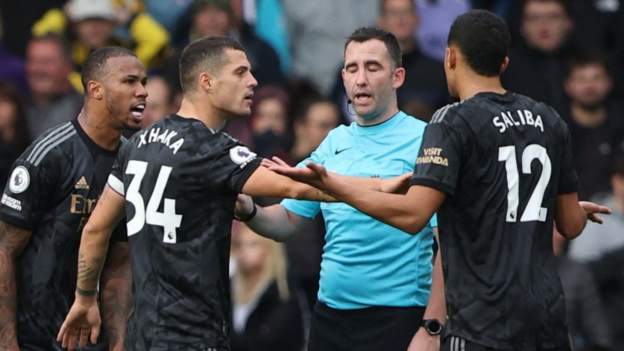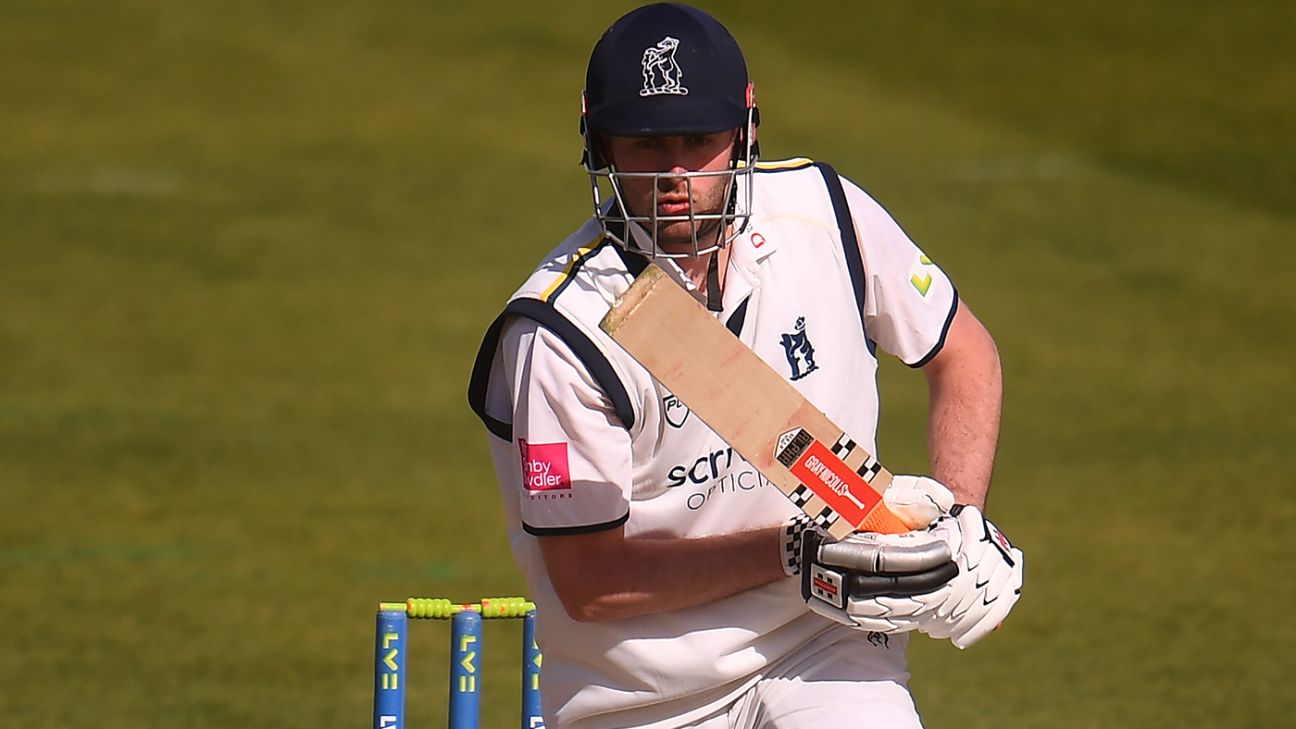[ad_1]
A reality check, indeed. Pat Cummins‘ first defeat as Australia Test captain in Galle, by an innings inside four days, was more than just a blip on the radar.
It doesn’t quite warrant the vitriolic email former Cricket Australia head of high-performance Pat Howard sent from a Dhaka cafe the day after their first-ever Test loss to Bangladesh in 2017.
Nor does it warrant the resignation of the chair of selectors and wholesale team changes, as happened after Australia’s last Test match innings defeat in Hobart in 2016.
It is the first defeat in 10 Tests for the new captain and the first defeat in five under new coach Andrew McDonald. Winning teams can have bad games and there are a lot of credits in the bank. If you had offered Cummins and McDonald a score line of two wins, two draws, and a loss from five consecutive subcontinental Tests prior to leaving for Pakistan in late February, especially in the wake of the messy departure of former coach Justin Langer, they would have gleefully accepted it.
However, if you’d offered the same at 329 for 5 on the second morning of the second Test in Galle would they have taken it?
“It’s a good reality check,” Cummins said post-match. “For people touring over here, it’s really hard. I think there’s so many positives out of last week that we did find methods that work. One small hiccup doesn’t mean you’ve got to change everything about your game.”
This is true. Reacting to one loss emotionally, no matter how large, would go entirely against the grain of this team’s new philosophy of being cool, calm and composed at all times.
But this was a little more than a hiccup. This capitulation had a very familiar feel to it for Australian teams on the subcontinent. For all the good work of Pakistan and the first Test in Galle, this would have felt like two steps forward and one decent step back.
To the batting firstly. India’s Ravindra Jadeja would have been licking his chops as he watched during his morning coffee in England, as 30-year-old left-arm orthodox Prabath Jayasuriya tore through Australia twice to take the fourth-best figures in history by a Test debutant.
Australia had mauled Lasith Embuldeniya last week to the point where Sri Lanka could not afford to pick him again. But the same methods did not work against Jayasuriya, who franked his tremendous first-class record with two spells of bowling that belied his Test inexperience.
Where the sweep and reverse sweep had been so productive for Australia’s batters in the first Test, it caused no end of problems in the second. What was noticeable was how many Australia batters fell trying to sweep off the stumps, with Cameron Green (first innings), David Warner, Marnus Labuschagne, and Nathan Lyon all trapped lbw attempting to sweep.
Contrast that with the diligence of Dinesh Chandimal, who used the sweep prodigiously but judiciously during his superb 206 not out. He barely once swept Mitchell Swepson‘s legspin or Lyon when he bowled from around the wicket, given lbw was very much in play. He only swept Lyon when he pitched wide of off, so he could get his front pad outside the line and he could sweep with the turn, something Steven Smith prefers to do.
The reverse sweep also yielded plenty of runs in the series but caused the downfall of Alex Carey at a critical time in the first innings. It would be rash and ill-advised for all of Australia’s top order to abandon their sweeping and reverse sweeping plans for India next year as a few did in Sri Lanka in 2016, but some refinement of those plans will certainly be needed.
“I think it’s just those individual methods,” Cummins said. “Everyone does it in their own way, slightly different. But just trying to get a little bit better at everything you try to do. We’ll obviously sit down after this and review it and look at different areas and maybe tactics, but I think it’s just those methods, which might be quite different to what we experience back home in trying to be good enough overseas.”
Likewise, with Australia’s batting selection on the subcontinent, refinement might be needed. Some of the areas were already known going in but it would have taken courage to make a change ahead of time.
Travis Head‘s record against spin was a watching brief for Australia’s selectors and he only confirmed what they already suspected. He could not protect his off stump nor could he score with any freedom. He was the only Australia batter not to make a half-century across the Pakistan and Sri Lanka series, with a highest score of 26. He now averages just 21.30 in Asia from seven Tests and has passed 50 only once.
There will be loud calls for Glenn Maxwell for India next year, as he was close to playing in this series. But Maxwell averages just 26.07 in Asia from seven Tests and has also passed 50 just once, albeit it was a superb hundred in Ranchi in 2017. He also hasn’t played a first-class game in three years and is unlikely to play one prior to the India tour.
The notion that he is a miles better horse for the course is not backed up by the numbers. Australia A’s concurrent tour to Sri Lanka yielded some excellent batting performances on similar pitches to that produced for the second Test. That Maxwell was called into the squad above any of those players did go against the high-performance philosophy they have been trying to move to in recent times.
Warner’s form in Asia is also worthy of discussion. He scored two half-centuries across the two tours. He has the unenviable record now of being one of only three players in Test history to have batted in the top four more than 25 times in India, Pakistan and Sri Lanka without making a century. He averages just 26.13 in those three countries with a highest score of 71. He has three centuries in the subcontinent, two in Bangladesh and one in the UAE, but only once has he faced more than 200 balls. The need to bat long in the subcontinent, as shown by Usman Khawaja, is every bit as valuable as big runs and Warner has not been able to provide it over his career despite being unequivocally one of Australia’s greatest ever openers.
From a bowling perspective, as well as Australia have played in these tours, they have only taken 20 wickets twice and have failed to bowl an opposition out inside 160 overs three times. One of those was on a flat wicket in Rawalpindi that yielded just 14 wickets in five days. But both in Karachi and Galle, opponents have batted for more than 170 overs on pitches where other innings in the game have seen 10 wickets fall inside 54 overs.
There will be questions raised about the composition of the attack and the form of Australia’s spinners, as they were unchanged for four of the five Tests. However, Australia’s fielding and reviewing were as much to blame in Galle. The bowlers created as many as 19 clear-cut chances to take just 10 wickets. Lyon and Swepson are lightning rods for opinion, but they had three missed stumpings (two were extremely difficult), a dropped catch, and four lbws between them that would have been out if either the umpire’s call had gone their way or reviews had been kept.
Mitchell Starc also had Chandimal caught behind on 30. Australia fans will make noise around some of the umpiring decisions, but it’s worth noting Sri Lanka overturned three incorrect decisions against them in the Test because they kept reviews up their sleeve.
Jayasuriya did, though, prove the value of a left-arm orthodox in the subcontinent, particularly on a decent pitch, where the angle to the right-handers and the odd ball not spinning can often cause more problems than a legspinner can muster. But Australia do not have a left-arm orthodox who averages 25.08 and strikes at 44.3 as Jayasuriya does, with their first-choice option Ashton Agar (whose tour was ended with a side strain) averaging 41.28 and striking at 80.7.
Cummins admitted he could have managed his bowlers better, with Swepson and Starc under-bowled in Galle compared to Lyon’s marathon 64 overs.
“I think field placements and using the spin bowlers, I hadn’t had a lot of experience with that,” Cummins said. “And just managing the tempo and even the bowling spells, 180 overs out here happens quite a bit overseas. Just managing different bowlers trying to keep relative control on the scoreboard and the scoring rate. It felt like I learned quite a bit.”
It has been a useful learning experience for Australia. A deciding third Test against Sri Lanka would have been even more valuable. But alas, they now wait until February next year for the date with India in their conditions. Five Tests against West Indies and South Africa at home will not aid their preparation for that tour in the slightest.
Therefore they cannot afford to brush this loss under the carpet, despite the positive nature of some of the gains over the previous four Tests. Sri Lanka have rather easily exposed some cracks that Australia thought they might have filled in. India have the skill to make them gaping holes next year.
[ad_2]




